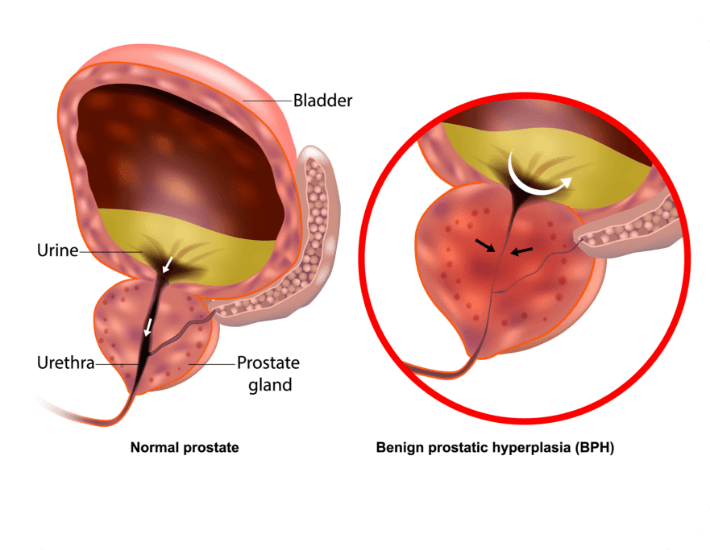Conditions of the Prostate
What is the prostate?
The prostate gland, a crucial part of the male reproductive system, is a small, solid organ about the size of a walnut. Situated behind the pubic bone and beneath the bladder, it surrounds the initial portion of the urethra.
A key player in male fertility, the prostate contributes approximately 0.5ml of fluid to each ejaculate. This fluid contains essential substances that nourish sperm, playing a vital role in fertility. Adjacent to the prostate are two small pouches known as seminal vesicles. Positioned directly behind the prostate, these pouches contribute an additional 2ml of ejaculatory fluid through small tubes that traverse the prostate and ultimately reach the urethra.
Abnormal PSA Levels
Cancer of the Prostate
Prostatitis
Diseases that can affect the prostate:
Benign Prostatic Hyperplasia
Benign Prostatic Hyperplasia (BPH) refers to the gradual enlargement of the central portion of the prostate, leading to the compression of the urethra and obstruction of urine flow. This condition can result in various symptoms, such as a weakened urine stream, urgency, and nocturia (the need to urinate during the night).
It's essential to understand that BPH is not cancer, and it does not progress into cancer. While BPH is often considered a normal aspect of aging in men, the extent of enlargement and the severity of symptoms can vary widely. The impact of BPH on an individual's quality of life is a key factor in determining the need for treatment. Some men may experience minor symptoms that do not significantly affect them, and in such cases, treatment may not be necessary.

For those whose quality of life is impacted by BPH symptoms, there are several highly effective treatment options available. Medications can be used to relax or shrink the prostate, and surgical interventions focus on removing the obstructing prostate tissue. A common surgical procedure for BPH is Trans-Urethral Resection of the Prostate (TURP), involving the use of a telescope passed through the urethra to shave away the enlarged prostate from the inside.
In certain situations, BPH can lead to urine retention in the bladder, causing more than just bothersome symptoms. Complications such as bladder stones, recurrent urinary infections, and impaired kidney function may arise due to bladder outlet obstruction caused by BPH. In such cases, surgical intervention becomes necessary.
Importantly, BPH is a common cause of elevated PSA levels between 4 and 10. Distinguishing BPH from prostate cancer can be challenging without a prostate biopsy, as both conditions can lead to increased PSA levels. Our experienced team is here to provide you with the necessary information and guide you through the diagnosis and treatment options, ensuring personalised care is aligned with your specific needs.
When to seek medical attention
If you experience severe pain, persistent urinary symptoms, or suspect kidney stones, consult with our urology team promptly. Early intervention can alleviate discomfort and prevent complications.